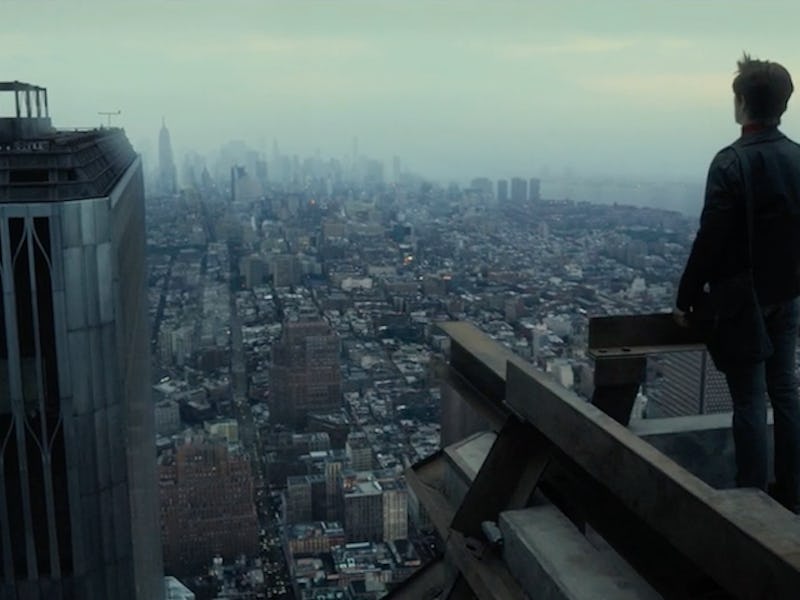'The Walk' Used Crazy Visual Effects to Recreate The Twin Towers
How a visual-effects studio built the Twin Towers from the ground up.

Remember The Walk?
Based on the box office results, perhaps not. Director Robert Zemeckis’s film itself, about artist Philippe Petit’s attempt to complete a high-wire walk between the two towers of the World Trade Center, wasn’t a standout. But the visual effects (VFX) breakdown from Atomic Fiction, the studio behind Deadpool, Cosmos, Star Trek: Into Darkness, and Game of Thrones, is pretty damn impressive.
The breakdown walks us through the many effects that were created for the film — all on a relatively small budget of $35 million. Using a simulcam system (which let Zemeckis preview what certain shots would look like with some of the effects in place), layered shots, and a lot of cloud computing, Atomic Fiction managed to stretch the budget into a pretty stunning final product.
Among the most important pieces of the visual effects tapestry, the VFX team needed to recreate: the Twin Towers. After carefully building the towers in painstaking detail, right down to the reflective anodized aluminum exterior, a team of artists “spent months introducing imperfections to make them feel hand-built,” the video notes.
The film not only needed to recreate an iconic part of New York City’s skyline, though, it also had to create a moving, living city as it would appear from multiple camera angles from the vantage point of the top of the towers.
It wasn’t just buildings that needed the VFX treatment, though. The film was shot in Montreal, and in order to make the streets of Montreal pass for Paris (where Petit, played by Joseph Gordon-Levitt, was from), shots were layered with photography from real locations and CG builds of landmarks like Notre Dame.
And, due to the incredibly technical and complex nature of some of the stunts, the film required 37 digital face-replacement shots wherein a professional performer’s face was replaced with that of Gordon-Levitt.
Typically, films that require the amount of VFX work that The Walk did would use a render farm — that is, a very powerful computer system built to handle the taxing work of rendering complex effects. But, a render farm wasn’t in the budget, so Atomic Fiction created software that would allow the team to render the effects in the cloud. It ended up being “the largest single use of cloud computing in the history of cinema.” Pretty impressive for something that you probably only use to store contacts, photos, and the occasional Google doc.